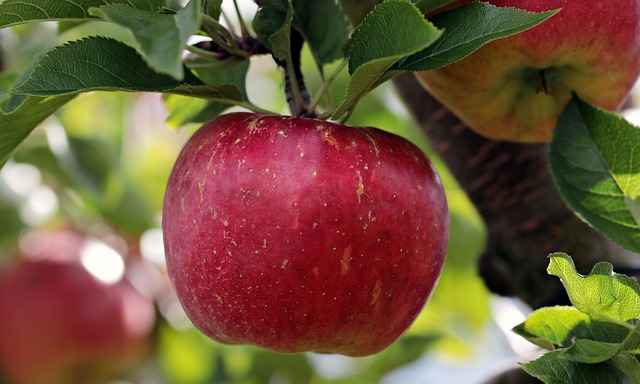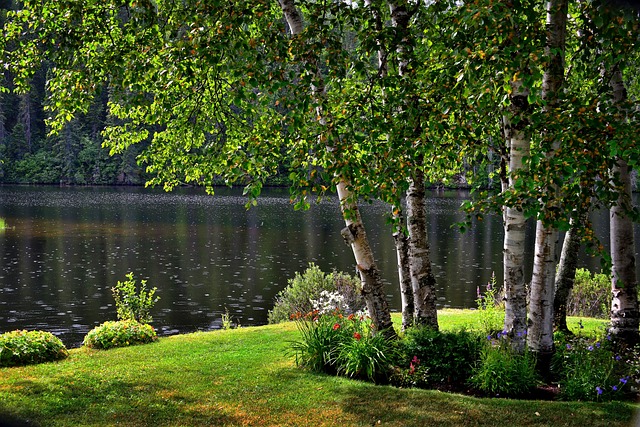Do you enjoy sitting in the shade of a tree on a hot day drinking lemonade? What about driving through a neighborhood that is lined with mature trees? Trees come in all sorts of colors and sizes. Some trees are deciduous. They lose their leaves in the fall. They are full of color in the spring with new leaves and flowers. Have you thought of planting a tree in your yard? What about planting a fruit tree? Depending on the climate where you live, fruit trees can always be planted, such as oranges in the south and apples in the north.
Trees provide numerous benefits to the environment, including:
Oxygen production:
Trees are important producers of oxygen through the process of photosynthesis. They absorb carbon dioxide and release oxygen, making the air cleaner.
Trees produce oxygen through a process called photosynthesis. During photosynthesis, trees use energy from sunlight to convert carbon dioxide and water into glucose (a type of sugar) and oxygen. The process occurs in specialized cells called chloroplasts, which contain a green pigment called chlorophyll that absorbs sunlight.
The tree’s leaves absorb carbon dioxide through small pores called stomata. Inside the chloroplasts, the carbon dioxide is combined with water that is taken up by the tree’s roots and transported to the leaves through a system of tubes called xylem. In the presence of sunlight and chlorophyll, the carbon dioxide and water are converted into glucose and oxygen.
The oxygen trees produce during photosynthesis is then released into the atmosphere through the same stomata that allow carbon dioxide to enter the leaves. This oxygen makes up a significant portion of the air we breathe and is essential for the survival of many living organisms, including humans.
Carbon sequestration:
Trees are also important carbon sinks. They absorb carbon dioxide from the atmosphere and store it in their leaves, branches, and trunks. This helps to reduce the amount of greenhouse gases in the atmosphere and mitigate climate change.
Habitat and biodiversity:

Trees provide habitat and food for various animal species, including birds, mammals, insects, and microorganisms. They help to support biodiversity by providing nesting sites, food sources, and shelter. Trees provide food in several ways, including:
- Fruits: Many trees produce edible fruits for humans and other animals. Examples include apples, oranges, bananas, mangoes, avocados, and cherries. Fruits are a rich source of vitamins, minerals, and fiber and are essential to a healthy diet.
- Nuts: Some trees produce nuts that are also edible, such as almonds, walnuts, pecans, and hazelnuts. Nuts are high in protein, healthy fats, and other nutrients and can be eaten raw or roasted.
- Sap: Certain trees produce sap that can be harvested and used as a sweetener. For example, maple trees produce sap that is boiled down to make maple syrup, a popular sweetener for pancakes and waffles.
- Leaves: The leaves of some trees can also be eaten, either cooked or raw. For example, grape leaves are commonly used in Mediterranean cuisine to make stuffed grape leaves.
- Edible bark: Some trees have bark that can be eaten, such as the inner bark of pine trees, which is high in vitamin C and can be eaten raw or cooked.
Soil conservation:
Trees help prevent soil erosion by anchoring soil with their roots and providing a barrier to wind and water erosion. Trees help with soil conservation in several ways:
- Soil stabilization: Trees have extensive root systems that help to anchor soil and prevent erosion. The roots hold the soil together, making it less likely to be washed away by rain or blown away by wind.
- Water retention: Trees help to regulate the amount of water in the soil. They absorb water through their roots and release it into the atmosphere through transpiration. This helps to keep the soil moist and prevent erosion caused by dry or compacted soil.
- Nutrient cycling: Trees help to cycle nutrients through the soil. As leaves and other organic matter fall to the ground, they decompose and release nutrients back into the soil. This helps to maintain soil fertility and support plant growth.
- Soil structure: Trees help to improve soil structure by adding organic matter to the soil. The roots of trees can penetrate deep into the soil, creating channels for water and air to move through the soil. This helps to prevent soil compaction and promote healthy soil structure.
Water conservation:

Trees play an essential role in regulating the water cycle. They absorb water from the soil through their roots and release it into the atmosphere through transpiration. This helps to control the amount of water in the soil and prevent flooding and drought. Trees conserve water in several ways:
- Reduced evaporation: Trees provide shade, which reduces the amount of direct sunlight that reaches the ground. This, in turn, reduces evaporation from the soil and helps to retain moisture in the soil.
- Reduced runoff: Trees intercept and absorb rainfall, which reduces the amount of runoff and helps to prevent erosion. This allows more water to penetrate the soil and be stored for later use.
- Increased infiltration: Trees’ roots help create channels in the soil, allowing water to infiltrate more easily. This helps to recharge groundwater and maintain water levels in rivers, streams, and other bodies of water.
- Increased transpiration: Trees release water vapor into the atmosphere through transpiration. This helps cool the air and increase humidity, reducing water loss through evaporation.
- Reduced water demand: Trees have lower water requirements than many other types of plants. This means they can survive in drier conditions and require less water to maintain healthy growth.
Trees play an essential role in water conservation by reducing evaporation, preventing erosion, increasing infiltration, and reducing water demand. These benefits help to maintain healthy ecosystems, support sustainable agriculture, and mitigate the impacts of drought and other water-related challenges.
Climate regulation:
Trees help to regulate local climates by providing shade and reducing the amount of heat absorbed by the ground. They also help to cool the air through evapotranspiration. Trees play an essential role in regulating the climate in several ways:
- Carbon sequestration: Trees absorb carbon dioxide from the atmosphere through photosynthesis and store it in their biomass. This helps reduce the amount of carbon dioxide in the atmosphere and mitigate the greenhouse effect contributing to climate change.
- Albedo effect: Trees can regulate the climate by reflecting sunlight into space. The leaves of trees have a high albedo, meaning they reflect more sunlight than they absorb. This can help to reduce the amount of heat absorbed by the Earth’s surface and lower temperatures.
- Transpiration: Trees release water vapor into the atmosphere through transpiration. This can help to cool the air and increase humidity, which can have a local cooling effect.
- Shade: Trees provide shade, which can reduce the amount of direct sunlight that reaches the ground. This can help to lower temperatures and reduce the need for air conditioning.
- Windbreaks: Trees can reduce wind speeds and protect crops and buildings from wind damage. This can help to maintain more stable temperatures and reduce the energy needed for heating.
Trees play an essential role in regulating the climate by sequestering carbon, reflecting sunlight, releasing water vapor, providing shade, and acting as windbreaks. These benefits help mitigate climate change’s impacts and support sustainable development.
Summary
Overall, trees are an essential part of the environment and provide numerous benefits to the ecosystem and the planet. Trees play a vital role in soil conservation by preventing erosion, retaining water, cycling nutrients, and improving soil structure. These benefits help to maintain healthy ecosystems and support sustainable agriculture and forestry practices. Trees provide a valuable food source for humans and other animals and are an important part of many traditional diets and cuisines worldwide.
Why not consider planting a tree this week? You can always plant a small tree in a pot if you don’t have a yard but a patio. You can always sponsor having tree planting somewhere. Here are a few organizations where you can sponsor tree planting around the world:
- OneTreePlanted: plant trees around the world.
- National Wildlife Federation: support tree planting in the United States.
- USDA Forest Service: choose a program to have a tree planted.
- A Living Tribute: plant a tree in honor of a loved one.
Featured Image by Joshua Choate from Pixabay
